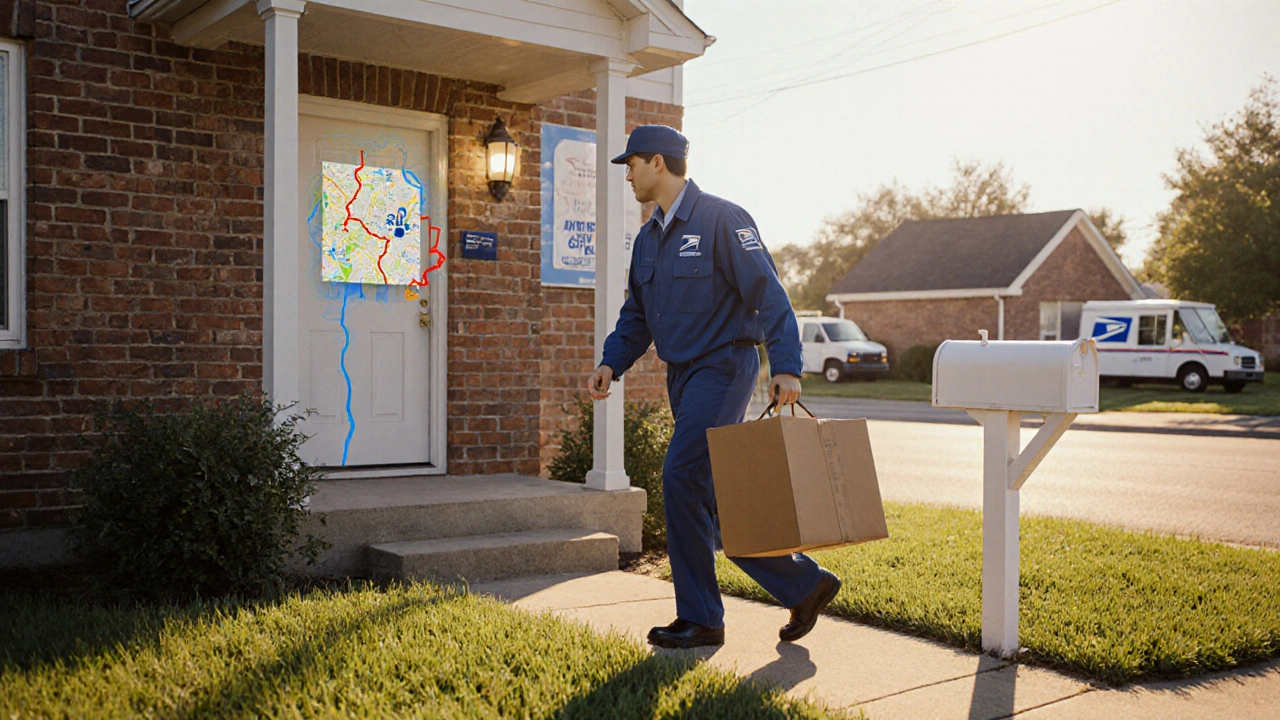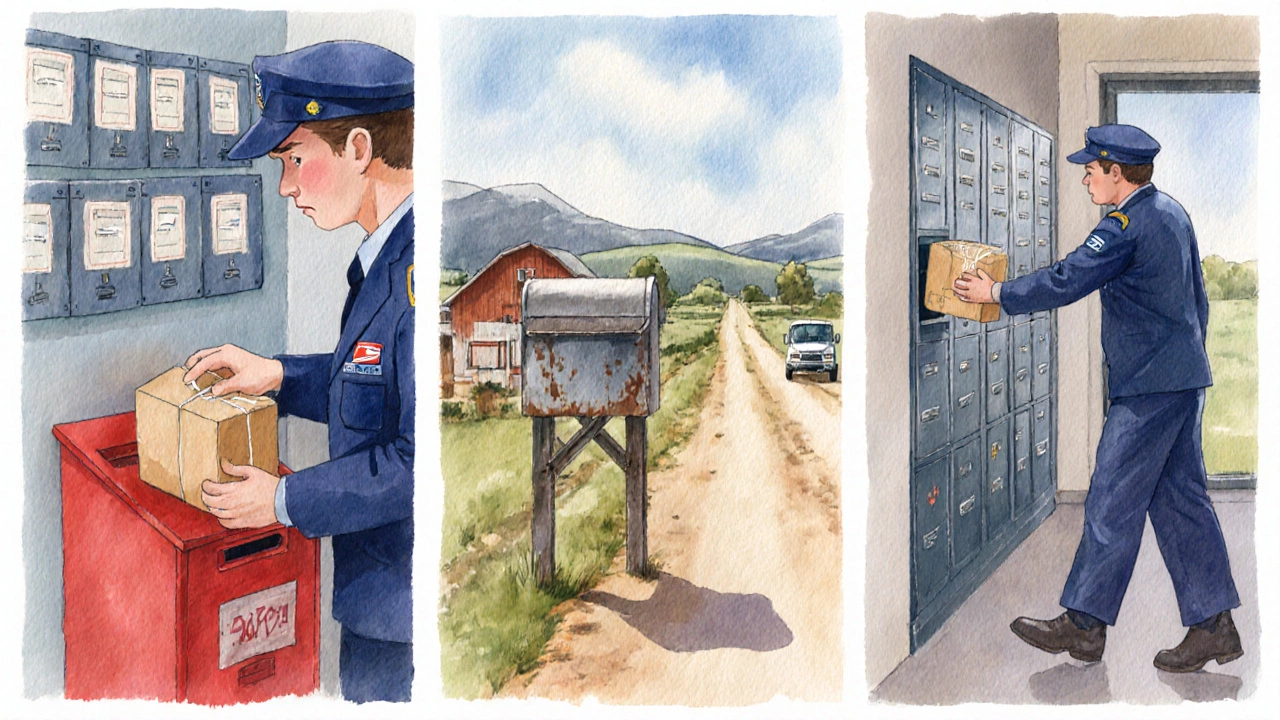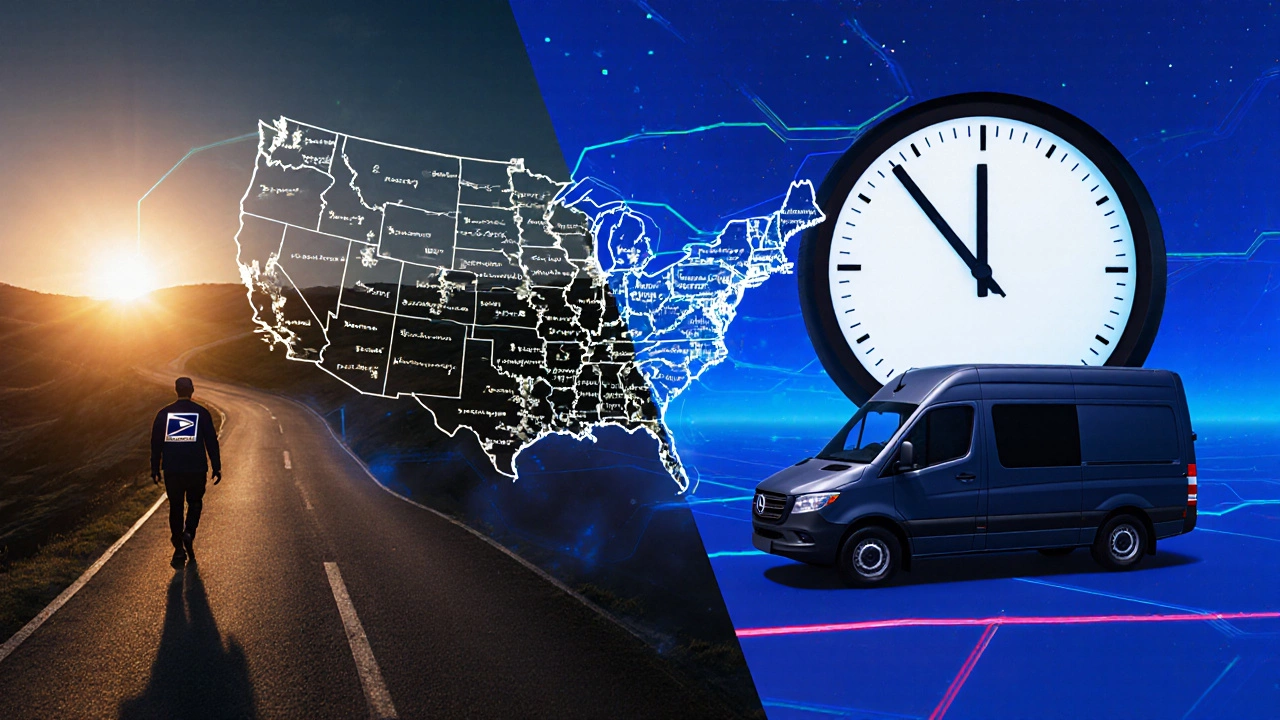USPS Last Mile Delivery Explained - Does the Postal Service Cover the Final Stop?

USPS Shipping Cost Calculator
Estimate USPS Shipping Costs
Calculate estimated costs for different USPS services based on your package weight and dimensions.
Estimated Cost
Enter package details to see your shipping estimate.
Note: This calculator uses estimated rates based on USPS 2025 pricing. Actual costs may vary based on location, package type, and additional services.
When you click ‘order’ online, the last thing you want to wonder about is who actually brings the box to your doorstep. Does the United States Postal Service handle that final leg, or are you really relying on a private courier without realizing it? In this guide we break down exactly how last mile delivery works for USPS, what services include it, how costs compare, and where the Postal Service shines or falls short.
What is Last Mile Delivery?
Last Mile Delivery is the final step in the shipping journey - moving a parcel from a local hub or post office to the customer’s front door, apartment lobby, or a designated pickup point. It’s called the “last mile” because, traditionally, that segment consumes the most time and money relative to the total distance traveled. The challenge isn’t the literal mile; it’s the complexity of delivering to millions of unique addresses, navigating traffic, and meeting consumer expectations for same‑day or next‑day windows.
How USPS Handles the Final Leg
USPS is the United States Postal Service, the nation’s government‑run mail carrier that handles everything from letters to bulk parcels. Unlike private couriers that rely on dedicated fleets, USPS leans on a massive network of post offices, carrier routes, and contract workers called Rural Carrier Associates.
- Each postal carrier is assigned a specific route, often covering a few dozen to several hundred addresses.
- Routes are organized by ZIP Code, carrier route letters (e.g., C, R, W), and Delivery Sequence Numbers.
- Carriers deliver to both residential and business addresses, as well as PO Boxes in many locations.
The moment a package arrives at the local post office, it’s sorted by barcode and placed into the carrier’s bag for the day’s delivery. That is the essence of USPS’s last‑mile service.
USPS Services That Include the Final Leg
Not every USPS product is equal when it comes to the last mile. Here’s a quick rundown of the most common services that actually get your parcel to the receiver’s doorstep:
- Priority Mail - 1‑3 day domestic delivery; includes standard tracking and delivery confirmation. Suitable for most e‑commerce orders.
- Priority Mail Express - Overnight to 2‑day guarantee; often the fastest USPS option for time‑sensitive shipments.
- USPS Retail Ground - Economy service for heavier packages (up to 70lb) that don’t need a fast transit time but still receive doorstep delivery.
- First‑Class Package Service - For parcels under 13oz; provides basic tracking and typical 2‑5 day delivery.
- Parcel Select Ground - Used by high‑volume shippers; packages are consolidated and delivered via USPS’s network of regional facilities, still ending with a carrier’s last‑mile drop.
All of the above services end with a carrier physically delivering the item to the recipient’s address, whether it’s a house, apartment building, or a PO Box (where the carrier places it in the box for the customer to collect).

Cost and Speed Considerations
When you compare USPS to private carriers, two variables dominate the decision: price per ounce and expected delivery window. In 2025 USPS posted the following base rates for a 2‑lb package (excluding surcharges):
- Priority Mail - $9.95
- Priority Mail Express - $26.45
- Retail Ground - $12.50
Private competitors like FedEx and UPS often charge higher base rates for comparable speeds but may offer more granular delivery slots or guaranteed Saturday delivery without extra fees.
Beyond cost, consider these practical speed factors:
- Delivery windows: USPS typically delivers between 9am and 7pm, with no exact appointment unless you purchase aDelivery Confirmation service that includes a time‑of‑day estimate.
- Weekend service: Saturday delivery is free for most Priority Mail services, while Sunday delivery is available only in select metropolitan areas for an extra fee.
- Rural reach: USPS’s Rural Carrier Associates serve addresses that private carriers label “hard‑to‑reach,” often at no additional cost.
USPS vs Private Carriers on the Last Mile
| Carrier | Network Reach | Average Cost per Mile (USD) | Typical Delivery Window | Rural Coverage |
|---|---|---|---|---|
| USPS | All U.S. addresses, PO Boxes, APO/FPO | 0.12 | 9am‑7pm (no exact slot) | Full - government mandate |
| FedEx | Urban and suburban, limited rural | 0.18 | Morning, afternoon, evening (paid options) | Partial - extra fees |
| UPS | Urban, suburban, some rural | 0.17 | Time‑definite options up to 2pm | Partial - surcharge for remote |
| Amazon Logistics | Urban dense delivery zones (Amazon Hub) | 0.15 | Same‑day, 2‑hour windows (prime) | Very limited - no PO Box |
Numbers above are averages drawn from carrier disclosures and industry reports for 2024‑25. The takeaway? USPS wins on universal reach and cost, while private carriers beat it on precise timing and optional amenities.
Tips to Optimize Your USPS Last‑Mile Shipments
If you’re an e‑commerce seller or a small business, you can make the most of USPS’s network with a few simple tricks:
- Use accurate ZIP+4 codes. The extra four digits pin the package to a specific carrier route, reducing mis‑sorts.
- Leverage Delivery Confirmation. Adding this service gives you a proof‑of‑delivery image and a more precise time‑of‑day estimate.
- Bundle small orders. If you ship several items to the same ZIP Code, consider using Parcel Select Ground for cost savings.
- Offer Saturday delivery. Advertise “Free Saturday Delivery” to increase conversion; USPS already includes it for Priority Mail at no extra charge.
- Watch carrier route letters. Knowing whether an address falls under a “C” (city) or “R” (rural) route helps you anticipate possible delays during peak seasons.
These tactics reduce the chance of a “Delivered - In/At Mailbox” status that actually means the carrier dropped the package at the curb, which can be problematic for high‑value items.

Common Questions About USPS Last Mile
Below we answer the most frequent doubts that pop up when people wonder if the Postal Service truly covers the last mile.
- Does USPS deliver to PO Boxes as part of the last mile? Yes - PO Boxes are a core component of the Postal Service’s delivery network. The carrier places the item directly into the box, and the resident picks it up.
- What happens in rural areas where no driveway exists? Rural Carrier Associates use a combination of foot, bicycle, or even small utility vehicles to reach every mailbox, regardless of road conditions.
- Can I track the exact moment a UPS driver hands my package to a USPS carrier? Once a package enters the USPS system, the tracking number switches to a USPS‑based scan. You’ll see updates like “Arrived at USPS Facility” and “Out for Delivery.”
- Is there a fee for the final doorstep drop? No - the cost is bundled into the service fee you paid (Priority Mail, Express, etc.). Optional services like Delivery Confirmation add a small surcharge.
- How does USPS handle apartment complexes? Carriers deliver to the mailroom or individual unit door, depending on building policies. If a building has a centralized mailroom, the parcel goes there; otherwise, the carrier walks the hallways.
Bottom Line
If you need a nationwide network that reaches every address, PO Box, and even remote farms, USPS is the go‑to carrier for the last mile. It may not offer the exact‑time slots of private couriers, but its universal coverage and low cost make it a solid choice for most shipments.
Frequently Asked Questions
What exactly is last mile delivery?
Last mile delivery is the final step of getting a parcel from a local hub or post office to the customer’s door, mailbox, or pickup location. It’s often the most expensive and time‑consuming part of the shipping process.
Does USPS deliver on Sundays?
Only in select metro areas and usually for Priority Mail Express shipments, and an extra fee is applied. Regular Priority Mail does not include Sunday delivery.
Can I get a precise delivery time window with USPS?
USPS does not offer guaranteed time‑of‑day windows for its standard services. The closest option is Delivery Confirmation, which narrows the window to “morning,” “afternoon,” or “evening” based on the carrier’s scan.
How does USPS handle remote or mountainous addresses?
Rural Carrier Associates are required by law to deliver to every inhabited address in the United States, no matter how hard‑to‑reach. They may walk, use a motorcycle, or drive a small utility vehicle to complete the delivery.
Is there a way to guarantee Saturday delivery with USPS?
Yes. All Priority Mail and Priority Mail Express shipments include free Saturday delivery. If you need guaranteed delivery by a certain time on Saturday, you must purchase an extra service like Saturday Delivery Confirmation.